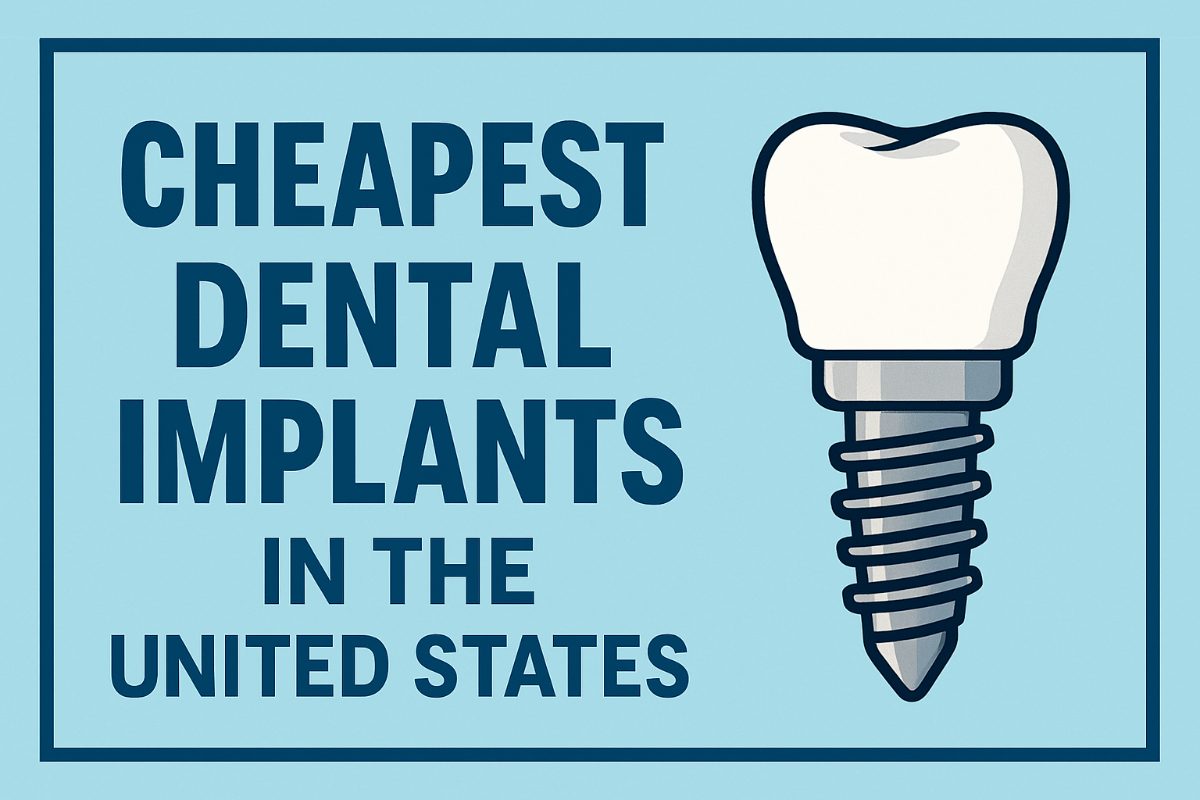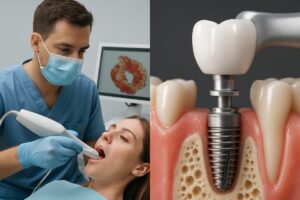Finding the lowest price for dental implants can be tempting, but cost alone doesn’t guarantee a safe or lasting result. This guide explains how to find the cheapest dental implants in the united states, when lower cost is reasonable, and how to spot risky bargains. Read on to learn what affects price, where discounts commonly appear, and how to choose value without sacrificing safety.
How dental implants work — a quick primer
An implant has three parts: the fixture (titanium screw placed in bone), the abutment (connector), and the crown (tooth). Treatment can take months: extraction and healing, implant placement, and final restoration. Proper imaging and planning matter because they reduce surprises that add time and cost and improve long-term success.
What drives the price of the cheapest dental implants in the united states
Implant type and scope of work
Replacing a single tooth is usually cheaper than multiple teeth or a full-arch solution like All-on-4. More implants, more restorations, and more chair time raise costs. Full-arch options often require lab work and complex prosthetics, which increase the sticker price.
Bone, grafting, and preparatory treatments
If bone is thin or missing, grafts, sinus lifts, or extractions are needed. These add surgery time, materials, and healing visits. What looks like a cheap implant at first can become expensive when preparatory work is required.
Materials, lab fees, and prosthetic complexity
Stock vs custom abutments, ceramic vs metal crowns, and the lab’s turnaround affect cost. Custom, high-quality restorations and precise lab work last longer but cost more. Faster lab service or same-day restorations can also raise fees.
Where patients often find the cheapest dental implants in the united states
Common low-cost options include dental school clinics, discount chains, dental tourism, and limited-time promotional rates. Dental schools offer lower fees with supervised trainees. Chains and promos can be cheaper but may limit time or services. Dental tourism cuts costs but adds travel risk and follow-up challenges. Each option has trade-offs.
How to balance cost with safety and long-term value
Red flags of dangerously low-priced implants
Watch for no imaging (no CBCT), no written treatment plan, missing follow-up care, low-quality materials, or no warranty. Very short treatment timelines and pressure to pay upfront are also warning signs.
Value signals to look for
Choose providers who use CBCT imaging, offer a clear treatment plan with staged steps, include follow-up visits, document success rates, and provide warranties. These signs suggest better outcomes and fewer surprise costs later.
Ways to afford implants without choosing unsafe bargains
Look at in-office financing, dental credit plans, phased treatment to spread cost, FSA/HSA use, and checking partial coverage from dental insurance. Some practices offer payment plans or partner financing that avoid risky shortcuts.
About choosing a specialist: when a periodontist matters
Complex cases—significant bone loss, multiple implants, or full-arch work—benefit from a board-trained periodontist. Specialized training and surgical experience can lower complication rates and save money over time by preventing failures.
How Avason Family Dentistry can help patients seeking affordable, high-quality implants
Dr. Frank Avason, DMD, MS, is dual-trained in periodontics and general dentistry and focuses on minimally invasive implant placement. Avason Family Dentistry in Denver, NC uses CBCT, intraoral scanning, PRGF/PRF, digital workflows, and local lab partnerships for efficient, reliable care that aims to control costs without cutting corners.
Next steps: getting a cost estimate and consultation
Gather dental records and X-rays, ask for a written treatment plan with timelines and warranty details, and compare full estimates—not just the lowest price. Schedule a consult to review options, risks, and real long-term costs before choosing care.




